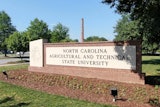In recent weeks the University of Southern California’s Center for Urban Education received due press for its report, Tapping HSI-STEM Funds to Improve Latina and Latino Access to STEM Professions. The report looks at how Latina/o science, technology, engineering and mathematics majors are funding their undergraduate education and how Hispanic-Serving Institutions can best use federal funds to support those students. Central to the funding approach are new monies made available through a provision in the March 2010 Health Care and Education Reconciliation Act.
The CUE study confirms what many higher education practitioners already know—Latina/o students on the whole have higher financial needs than their White counterparts. The report cites U.S. Department of Education data that indicates 60 percent of graduating high school seniors from Latina/o backgrounds work an average of 30 hours or more per week.
If this tendency continues for students once they enter college, these students are statistically less likely to persist to graduation. With this in mind, and given continued increases in tuition and fees nationwide, institutions must provide financial literacy programming and experiential opportunities that are tied to financial assistance, particularly for STEM students.
Student affairs staff should recognize the significant academic demands of being a STEM major. Most STEM fields require laboratory and field work; and, even when not required, research experience and exposure is strongly encouraged. The challenge for universities is to match undergraduate research experiences with financial support—both of which will lead more students to complete STEM degrees; an outcome that every college and university is (or should be) focused on.
Among the most salient findings from the scholarly work on underrepresented students in STEM disciplines is the positive impact of undergraduate research experiences in promoting persistence and the role of financial support in degree completion.
It is therefore no surprise that the most successful STEM retention programs combine research experience with financial aid. The Meyerhoff Scholars Program at the University of Maryland, Baltimore County is a model example of institutional programming that provides research experience and exposure, community-based academic enrichment, and financial support for a full four years.
Also focused on the provision of financial support for minority student success is the National Action Council for Minority Engineers. NACME provides more than $4 million in scholarship money each year to undergraduate minority students in engineering fields. In addition, NACME leverages its relationships with institutions to help students complete STEM degrees and prepare to enter graduate study.
Using Meyerhoff, NACME, and other local and national models that have demonstrated success, HSIs should set an agenda to support STEM students in financial and other ways. That way, when the federal funds are appropriated, institutions can hit the ground running. Other minority-serving institutions would be wise to follow the same lead. These institutions, such as historically Black colleges and universities or tribal colleges, also received funds via HCERA, which has specific language embedded in the legislation that calls for strengthening STEM education.
Such institution-led efforts are further important given the current realities of federal need-based aid available to students. The Pell Grant program has failed to keep pace with rising tuition and fees in recent years and is currently facing a budget shortfall of $5.7 billion. The result of the shortfall could be potentially reduced award amounts for close to 9 million students. This diminished capacity of the federal government places much of the responsibility to directly fund students at the state and institutional levels.
That said, there are ways that institutions can support students with already existing funding streams and programmatic efforts. One is to build in paid undergraduate research assistantships to new and existing (through supplementary proposals) federal and privately funded research grants.
In a similar vein, colleges can utilize—as the CUE report recommends—available federal research support in instituting research as part of the core curriculum for STEM majors. Making such experiences a formal component of academic programming would allow institutions to get closer to a seamless integration of research opportunities, instead of a de facto requirement that students must fit it in alongside their many other responsibilities.
The federal commitment to research and development within the nation’s research universities is strong and should be used as an avenue by which HSIs and other MSIs are able to build their research capacity and thus provide their students with meaningful research experiences.
As the CUE report points out, instead of concentrating on the usual “top 100” research institutions and giving them hundreds of millions of dollars every year, federal agencies need to make MSIs—indeed all colleges and universities with a strong record of graduating minority STEM students—a funding priority.
The combination of need-based aid, support from STEM departments and co-curricular, research-rich programming will take the nation’s minority students further than any one source of aid or academic enrichment alone. If the end game is more graduates for a robust STEM workforce at a time of limited resources, then there must be an alignment of those resources and support for institutional adaptation.
Dr. Lorelle L. Espinosa is the director of policy and strategic initiatives at the Institute for Higher Education Policy, a Washington, D.C.-based independent, nonprofit organization that is dedicated to increasing access and success in postsecondary education around the world.















